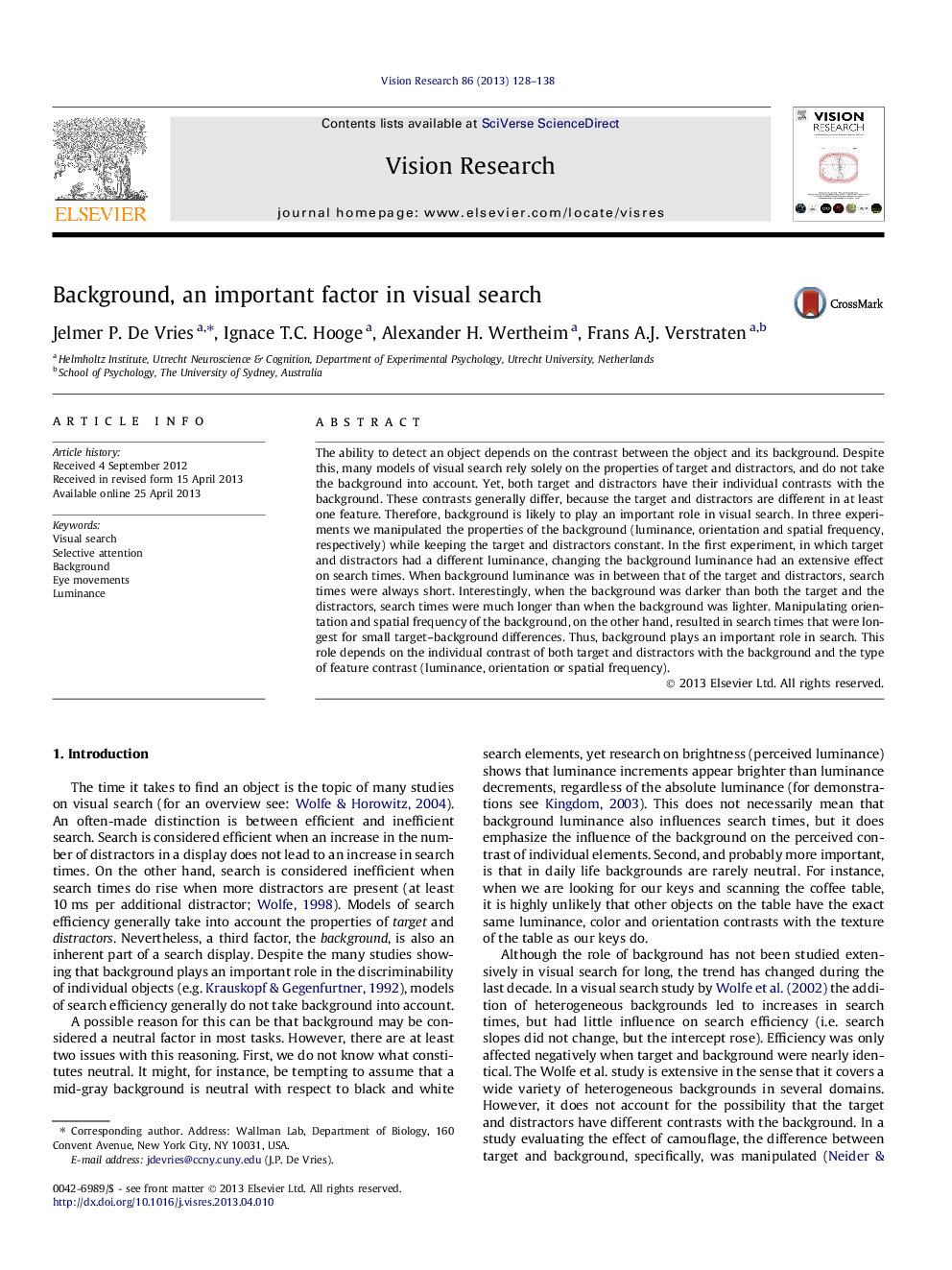| Article ID | Journal | Published Year | Pages | File Type |
|---|---|---|---|---|
| 4033808 | Vision Research | 2013 | 11 Pages |
•Background was manipulated while keeping the target and distractor constant.•Background luminance, orientation and spatial frequency are manipulated, separately.•Search times are dependent on the feature domain in which the background is varied.•For luminance, the largest increase in search time is found for a black background.
The ability to detect an object depends on the contrast between the object and its background. Despite this, many models of visual search rely solely on the properties of target and distractors, and do not take the background into account. Yet, both target and distractors have their individual contrasts with the background. These contrasts generally differ, because the target and distractors are different in at least one feature. Therefore, background is likely to play an important role in visual search. In three experiments we manipulated the properties of the background (luminance, orientation and spatial frequency, respectively) while keeping the target and distractors constant. In the first experiment, in which target and distractors had a different luminance, changing the background luminance had an extensive effect on search times. When background luminance was in between that of the target and distractors, search times were always short. Interestingly, when the background was darker than both the target and the distractors, search times were much longer than when the background was lighter. Manipulating orientation and spatial frequency of the background, on the other hand, resulted in search times that were longest for small target–background differences. Thus, background plays an important role in search. This role depends on the individual contrast of both target and distractors with the background and the type of feature contrast (luminance, orientation or spatial frequency).
